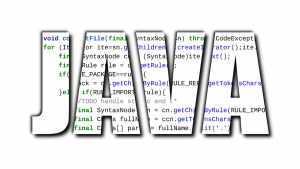Indroduction
Java is a versatile programming language that plays a crucial role in both frontend and backend development. Its platform-independent nature and robust performance make it a preferred choice among developers worldwide. But is Java primarily used for frontend or backend development? The answer lies in understanding its capabilities and how it is applied in software development projects.
Java is predominantly used for backend development, where it powers the server-side of applications. With frameworks like Spring, Hibernate, and Java EE, Java ensures seamless communication between databases, servers, and client-side interfaces. It handles the business logic, data processing, and application flow, which are critical for backend functionality. For example, Java is commonly utilized to create APIs, manage server requests, and enable scalability in web and enterprise applications.
While Java’s primary domain is backend development, it also supports frontend development in certain scenarios. Libraries like JavaFX and Swing allow developers to create graphical user interfaces (GUIs) for desktop applications. Additionally, frameworks such as Vaadin facilitate frontend development by integrating Java with modern web technologies. However, in the realm of web-based frontend development, Java is less commonly used compared to languages like JavaScript, which dominate the browser environment.
For aspiring developers, learning Java offers a wealth of opportunities in backend development, especially for enterprise applications, Android development, and cloud-based solutions. Opting for Java training online can be a strategic step to master this powerful language and gain practical skills to excel in the tech industry. Online training programs provide flexibility, hands-on projects, and expert guidance, making them an excellent choice for beginners and experienced professionals alike.
Whether you’re aiming to build robust backend systems or explore Java’s potential in frontend development, mastering this language opens doors to a dynamic career in software development. By understanding its applications in both domains, developers can leverage Java to create scalable, high-performance solutions for a wide range of industries.
Understanding Frontend and Backend Development
Before diving into Java’s role, let’s clarify what frontend and backend development entail:
Frontend Development
Frontend development focuses on creating the visual interface of a software application. It’s what users see and interact with buttons, forms, navigation menus, and animations. Common technologies for frontend development include:
- HTML: Defines the structure of web pages.
- CSS: Styles the appearance of web pages.
- JavaScript: Adds interactivity and dynamic behavior.
Popular frameworks include React, Angular, and Vue.js.
Backend Development
Backend development handles the server-side logic, database interactions, and application performance. It’s the engine that powers the frontend. Backend development often involves:
Frameworks: Spring (Java), Django (Python), Ruby on Rails.
Programming Languages: Java, Python, Ruby, PHP, etc.
Databases: MySQL, MongoDB, PostgreSQL.
The Use of Java Programming Language
Java is an object-oriented programming language used for developing mobile and web apps.
If you’re working on a web dev project, it is important to identify the right language to use. A good factor that can help you pick the right language is to analyze the aspect you want to build.
Are you working on the front end or the server end of a website? Ask yourself this question.
Whatever aspect you’re working on, the Java programming language can be implemented.
The java course with placement program is necessary because it offers a broad course outline that breaks down the fundamentals of Java. So, it is important to enroll in the program.
That said, let’s analyze the point of discussion without further ado.
Java is mainly used for backend development but it can also be used for frontend. Here’s why;
Java programming language is made to offer versatility. This is why developers can use Java to write codes that can run on any platform. While Java is classified as a backend programming language, there are instances where it can be used to build frontend projects.
Is Java Used for Frontend?
While Java is primarily known for backend development, it does have some applications in frontend development. Let’s explore:
Java in Frontend Development
Java isn’t the first choice for frontend development, as it lacks the visual and user interface capabilities of HTML, CSS, and JavaScript. However, there are scenarios where Java plays a role in the frontend:
- JavaFX:
- JavaFX is a platform for creating rich desktop applications with a modern UI.
- Developers can build visually appealing applications with features like charts, graphs, and animations.
- Applets (Legacy):
- Java Applets were used for embedding small applications into web browsers. However, they’re now obsolete due to security and compatibility issues.
- Integration with JavaScript:
- Java can complement JavaScript in specific cases, particularly in server-side rendering or full-stack frameworks.
Real-World Example of JavaFX
A classic use case of JavaFX is in financial dashboards, where complex visualizations like stock market trends or performance charts require a robust backend to handle data.
Is Java Used for Backend?
Java shines as a backend development language due to its reliability, scalability, and extensive ecosystem. Here’s why Java dominates backend development:
Key Strengths of Java in Backend
- Platform Independence:
- Java’s “Write Once, Run Anywhere” (WORA) principle ensures that code runs seamlessly across different platforms.
- Scalability:
- Java can handle large-scale applications, making it ideal for enterprise solutions.
- Rich Framework Ecosystem:
- Frameworks like Spring, Hibernate, and Struts streamline backend development.
- Security:
- Java’s built-in security features make it a reliable choice for handling sensitive data.
Popular Use Cases for Java in Backend
- Enterprise Applications:
- Companies like IBM and Oracle use Java for robust enterprise solutions.
- Web Applications:
- Java-based frameworks like Spring Boot simplify web application development.
- APIs and Microservices:
- Java’s scalability makes it suitable for building APIs and microservices, integral to modern software architecture.
- Mobile Backend:
- Java powers Android app development, often requiring backend integration for functionalities like data storage and user authentication.
Real-World Example of Spring Framework
Consider a banking system where customer data, transactions, and account management need seamless backend operations. The Spring framework enables developers to build a secure, scalable, and efficient backend.
Learning Java for Frontend and Backend Development
Whether you aim to specialize in frontend, backend, or full-stack development, mastering Java can significantly boost your career. Below is a step-by-step guide to learning Java effectively:
Step 1: Start with Core Java
- Learn the basics of object-oriented programming (OOP).
- Understand fundamental concepts like variables, data types, and control structures.
Step 2: Explore Java Frameworks
- For Backend: Learn Spring, Hibernate, or Struts.
- For Frontend: Experiment with JavaFX or integrate Java with frontend tools.
Step 3: Practice Hands-On Projects
- Build real-world projects, such as a library management system, an e-commerce site, or a chat application.
Step 4: Earn a Java Certification
- Enroll in Java training online or pursue java training certificates to validate your expertise.
Step 5: Stay Updated
- Follow industry trends and participate in developer communities to stay ahead.
Here are important factors to keep in mind;
- Java is a programming language that meets all the parameters that developers consider when choosing a programming language. These parameters include resources, security, frameworks, language support, and performance issues.
- Java is an easy language to learn and it is used to solve code queries without hassle.
- Java interacts well with the main programming language used for front-end development which is JavaScript. So, it can be used to serve frontend templates.
- Since Java can be used to write codes that serve as templates for websites, we can assume it is used for frontend development. The fact that the templates are translated into JavaScript means you can classify Java as being used in this aspect of web dev.
- Java is used to build mobile applications and desktop applications. So, it offers a front-end function. However, the actual use of Java on projects like this involves building the back-end servers. You can learn more about this with Java coaching online.
- Java is used for both frontend and backend development because it is platform-independent. Java is so versatile that it runs on billions of computers worldwide.
- Java is a frontend scripting language because it can be used to create the user interface. But it is more of a back-end scripting language because Java communicates with the server APIs. Learn more with a Java course with a placement program.
- Java frameworks and libraries offer so much in mobile app development. It supports web-based app development through JSP and servlet. Also, it is used for building cloud-based apps and mobile games.
For more knowledge, you should consider enrolling in the free Java training and placement program.
Why Choose H2K Infosys for Java Training?
H2K Infosys offers some of the best online courses for Java, tailored to meet industry demands. Here’s what makes our courses stand out:
- Comprehensive Curriculum:
- Covers core Java, advanced concepts, and hands-on projects.
- Experienced Trainers:
- Learn from seasoned professionals with real-world experience.
- Flexible Learning Options:
- Access self-paced and live sessions to suit your schedule.
- Industry-Recognized Certification:
- Boost your career prospects with a Java training certificate.
- Job Assistance:
- Get guidance on resume building, interview preparation, and job placement.
Key Takeaways
- Java’s primary strength lies in backend development, but it can also be used for specific frontend applications like JavaFX.
- Its scalability, security, and extensive ecosystem make Java a preferred choice for enterprise and web applications.
- Learning Java opens doors to numerous career opportunities, from software development to Android application design.
- Enrolling in H2K Infosys’ courses for Java developers equips you with the skills and certification needed to thrive in the tech industry.
Conclusion
Java’s versatility makes it a valuable skill for developers aiming to excel in either frontend or backend development. If you’re ready to embark on a rewarding career path, join H2K Infosys’ Java training online today. With hands-on learning, expert guidance, and industry-recognized certification, you’ll be well-equipped to succeed as a Java developer. Start your journey now!























